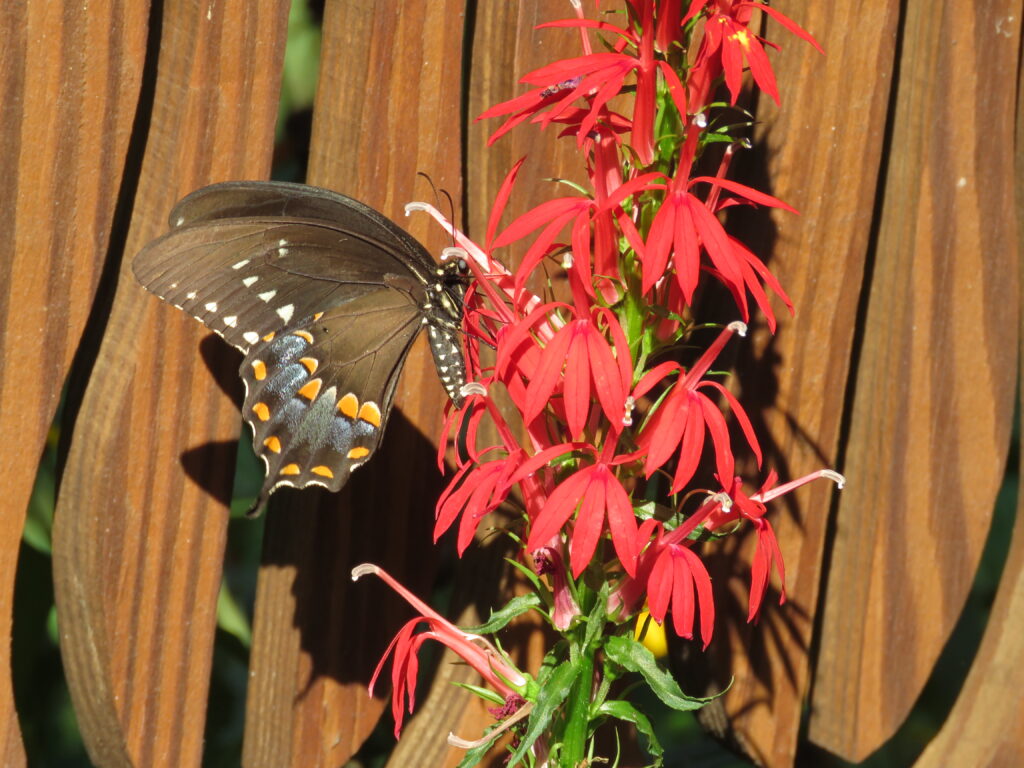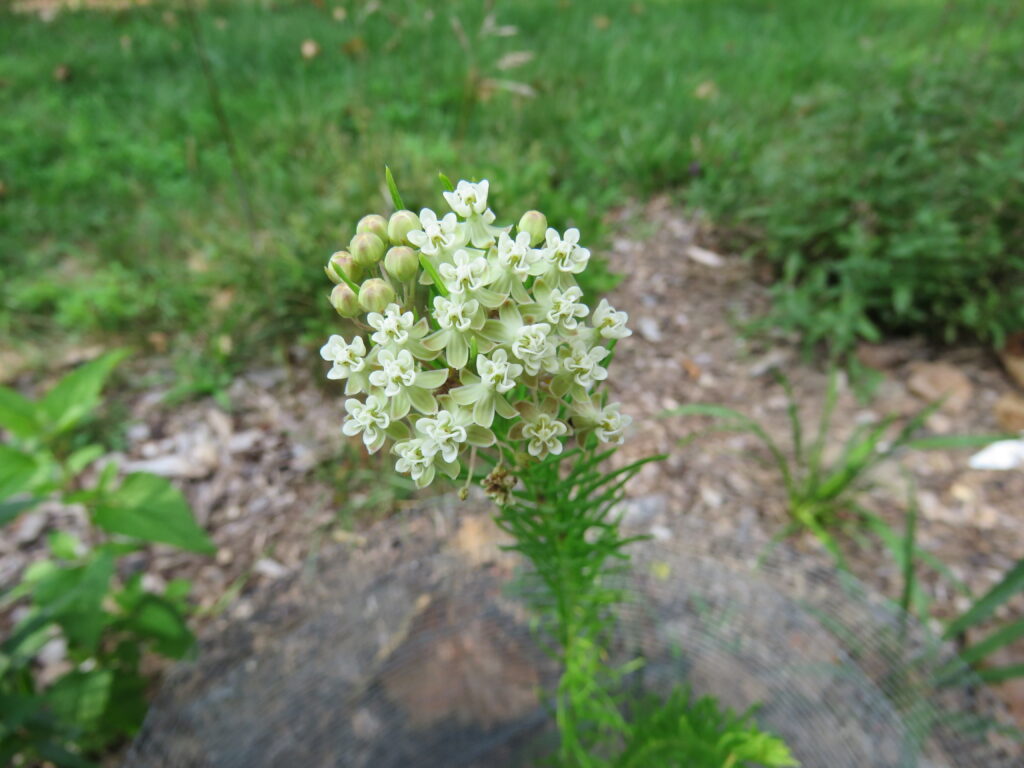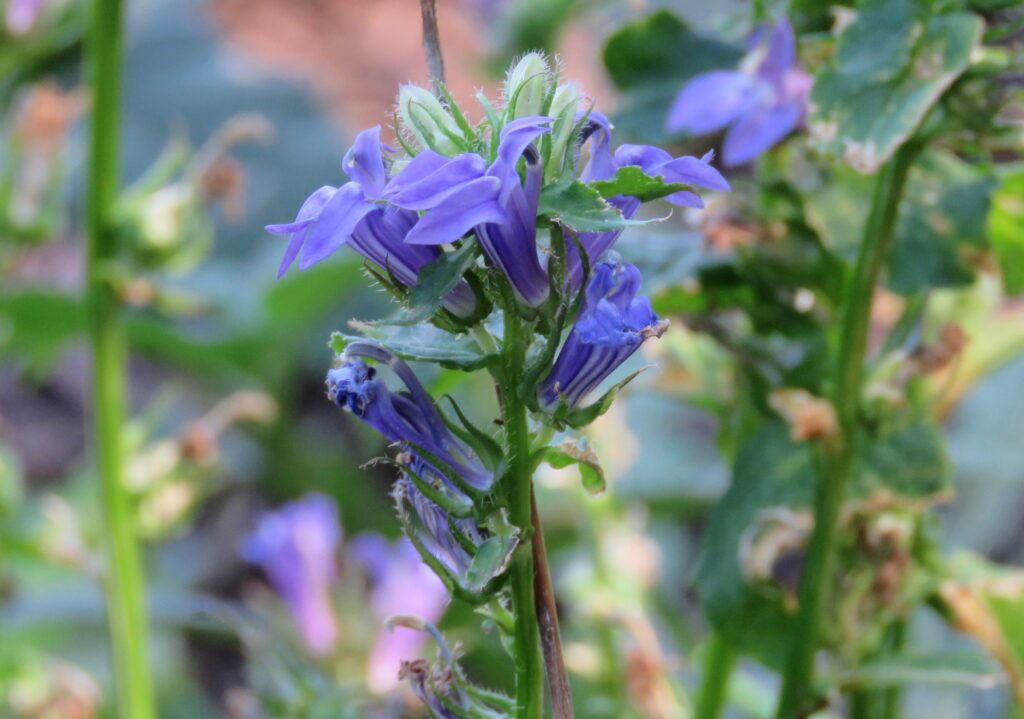Show your colors this Independence Day by adding some red, white and blue to your summer garden! These American natives support local bees, butterflies and birds by providing nectar, pollen, seeds and nesting materials. Search for additional colorful natives to plant in your garden using the Jersey-Friendly Yards Plant Database.
Red

Cardinal Flower (Lobelia cardinalis) is one of the most attractive native wildflowers in New Jersey. The showy, scarlet-red flowers are a hummingbird magnet, blooming July through September. Cardinal Flower requires moist-wet, humus-rich soil to ensure optimum growth. It prefers partly shady areas, but it can tolerate full shade. Enhance your yard’s perennial border, butterfly garden, rain garden, or moist woodland edge with this gorgeous native!
Red interest in the July-garden is also provided by these plants: Scarlet Beebalm, Royal Catchfly, Garden Geranium, Trumpet Honeysuckle, Scarlet Sage, Begonia cultivars, Rose Mallow,
White

Whorled Milkweed (Asclepias verticillata) displays rounded bouquets of delicate white flowers that provide a food source for bees, many species of butterflies, and other beneficial insects. Flowers are followed by smooth pods that dry out and break open, releasing numerous wind-dispersed seeds. Feathery, needle-like leaves grow in whorled patterns around the stem, creating an appealing and unusual texture. Monarch butterflies lay their eggs on the foliage of milkweed, which is then consumed by the growing caterpillars. Whorled Milkweed is easily grown in well-drained sandy or clay soils, in full sun or part shade.
Additional native, white flowering plants in July include: American Black Elderberry, Buttonbush, Inkberry Holly, Oak Leaf Hydrangea, Swamp Azalea, and Arrowwood.
Blue

Great Blue Lobelia (Lobelia siphilitica) features blue flowers that bloom July-September. The tubular shape attracts hummingbirds, as well as bees. It prefers part-shade, but will tolerate near-full shade and full sun in cooler climates. Its native habitat includes swamps and moist, low areas, and will appreciate similar conditions in your yard. Use Great Blue Lobelia in the back of borders to add depth to your garden. Plant it in rain gardens, wildlife gardens and woodland gardens.
These plants also provide a burst of blue in July: Highbush Blueberry, Blue Skullcap, Winged Monkeyflower, Little Bluestem, Bluejacket (Ohio Spiderwort), Blue Vervain, Wild Lupine, Rocket Larkspur, Speedwell, Northern Harebell.
